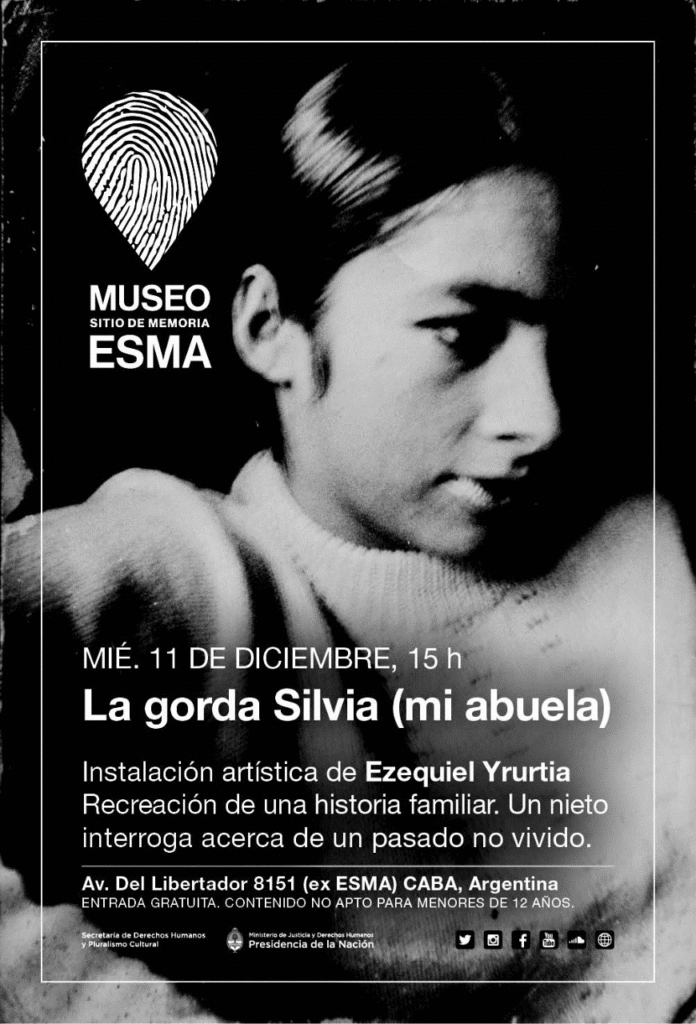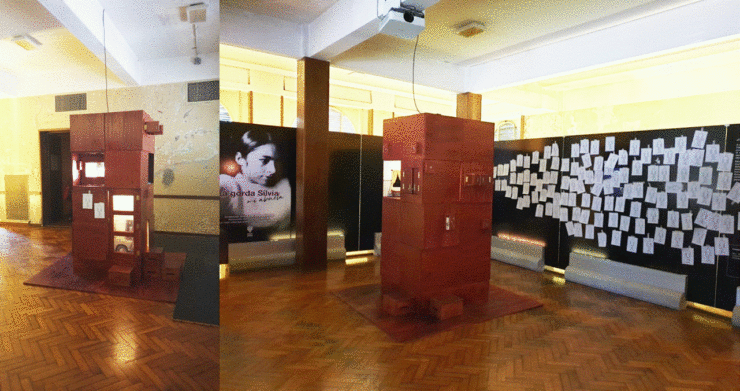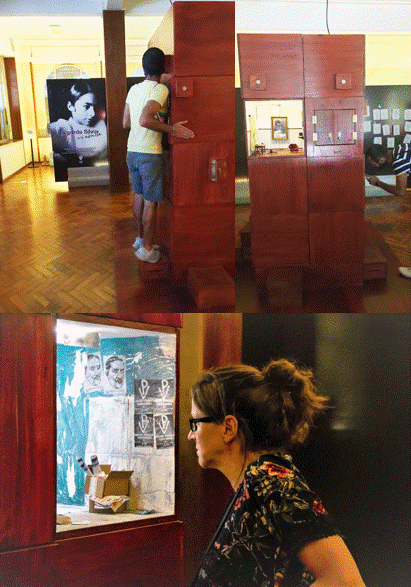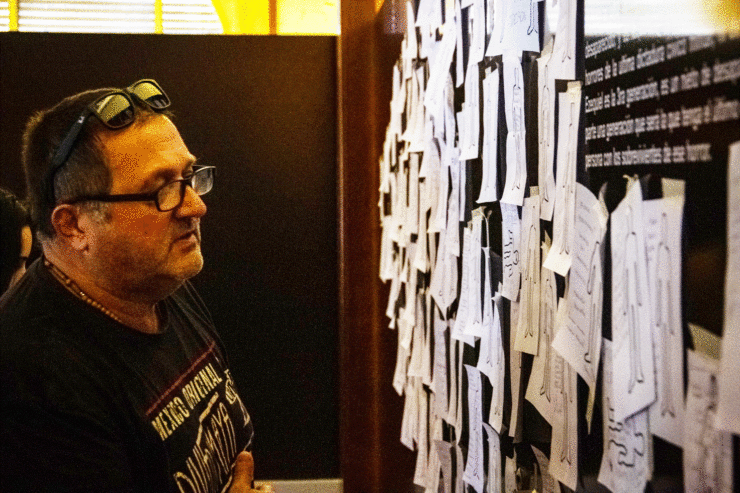Blog
My Grandmother the Militant: Activism as a Family Story
Daniele Salerno:
Her name was Alicia Raquel Delaporte but everybody called her “la gorda Silvia”. For the 21-year-old artist Ezequiel Yrurtia la gorda Silvia was “mi abuela”: his grandmother. Yet, Yrurtia never met his grandmother. Instead he decided to reconstruct her story by gathering pictures, oral testimonies and traces of her life. The result is an exhibition hosted at the former Escuela de Mecánica de la Armada (ESMA) in Buenos Aires. The ESMA was the main clandestine detention, torture and extermination center active during the last civic-military dictatorship in Argentina (1976-1983). 30,000 individuals “disappeared” in over 600 clandestine centers. La gorda Silvia was one of them.

Entrance to the Casino de oficiales, today the Museo Sito de Memoria ESMA (courtesy of Museo Sitio de Memoria ESMA)
I had already visited the ESMA in 2016. When I returned more recently, it was once again a colorful sunny day in summer, when the ESMA’s green tree-lined passages make it appear an almost peaceful place. Yet, the black and white glass, with the faces of some of the disappeared covering the facade of the Casino de oficiales – the officers’ residence and the core of the detention center transformed into a memorial museum – immediately reminded us of the purpose this place once had.

Exhibition flier (courtesy of Museo Sitio de Memoria ESMA)
I approached the exhibition with two questions: how do the “third generation”, the grandchildren of the disappeared, appropriate the memory of something they have not lived through? And how do they reconfigure two phenomena: “family-ism” (in the words of Elizabeth Jelin) and “post-memory” (an expression coined by Marianne Hirsch)?
Family-ism legitimizes the voice of victims’ relatives who lived through past atrocities, assigning them a sort of symbolic “ownership” over their relatives’ memory. Notably, mothers, grandmothers, sons and daughters of the disappeared in Argentina played a pivotal role in the struggle for truth and justice in the transition to democracy. When their grandchildren arrived, their memory was not based on lived experiences but on (missing) words, narratives and images circulating in the family: a post-memory.
However, in the long run, a memory grounded on bloodline risks cutting out the rest of society, hampering the process of the cultural transmission of memory and the recognition of bonds that fall outside of the family as a (patriarchal) institution. Furthermore, memory is selective: to narrate the story of an individual for what s/he was biologically – a blood relative, in this case “my grandmother” – rather than for what s/he did – for example, struggling against a dictatorship – may expunge militancy and activism from their narratives.

The towers (courtesy of Museo Sitio de Memoria ESMA)
Two wooden towers welcome the visitor to the Casino de oficiales. Supposedly, the towers contain the reconstruction of part of the house where Silvia lived. On the surface of the towers there are drawers and doors, similar to those of cabinets and jewelry cases. In order to open them and look inside, we often have to bend or use little stairs. Exploring the towers, we assume the height and form of a child (how many times, as a child, did we use chairs to reach drawers or doors that we were not supposed to open?).
By listening to fragments of stories on Silvia and looking at the pictures her grandson found or glimpsed at home, we reproduce Ezequiel Yrurtia’s attitudes in the face of the familiar memory of his grandmother. Indeed, the installation pushes us to embody the figure of the grandchild, to become Yrurtia: reproducing his inquisitive postures and gestures, trying to reach something that he physically and cognitively was not able to reach or fully understand.

Exploring the towers (courtesy of Museo Sitio de Memoria ESMA)
In the end we do not have a clear narrative of who Silvia was or what she did. Instead, the exhibition involves temporarily assuming the subjective position of the grandson of a desaparecida. However, visitors cannot forget Silvia’s political engagement against the dictatorship.
A stack of papers with silhouettes – iconic representation of desaparecidxs – are available to the visitor to write a message on and put on the wall in front of the towers. The silhouettes are often modified, sometimes they have been “queered” to represent bodies that are different from the conventional masculine ones. Messages are mainly about the current wave of protest and activism in South America. Paying homage to Silvia and momentarily becoming Yrurtia, visitors connect this family story with other, past and present, stories of political engagement and struggles. The exhibition enables connections between different memories, opening up biological kinship to allow the construction of multiple fictive kinships – not based on blood but on narratives of activism and political engagement from past to present.

The silhouettes (courtesy of Museo Sitio de Memoria ESMA)
Exhibition Website: http://www.museositioesma.gob.ar/miercoles-11-de-diciembre-la-gorda-silvia-mi-abuela/
Exhibition Video: https://www.facebook.com/watch/?v=804089176705630
Ezequiel Yrurtia’s Website: http://www.ezequielyrurtia.com/


